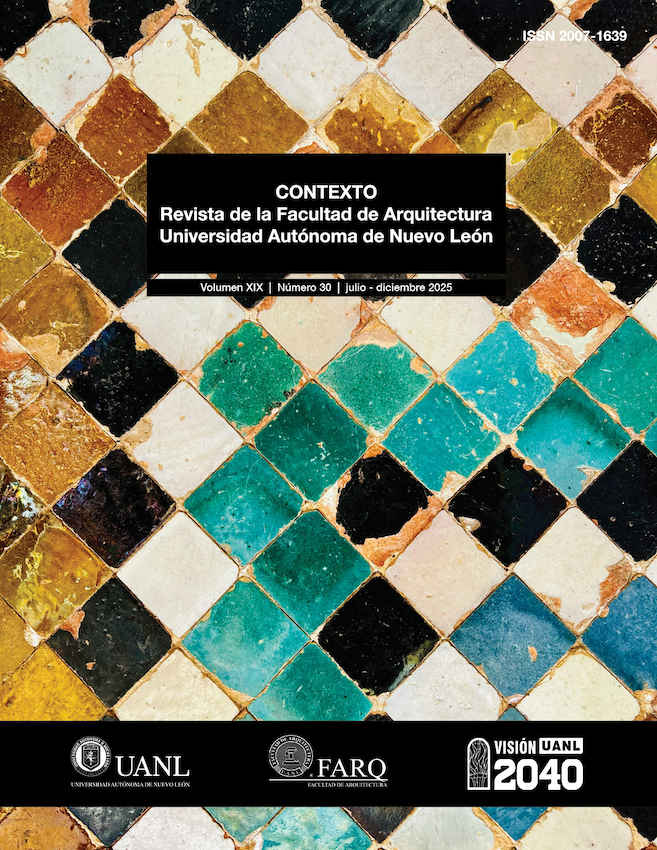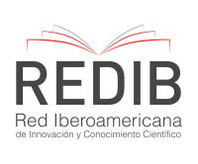Roots and transformations
The architectural identity in the changing context of San Andrés and Providencia, Colombia
DOI:
https://doi.org/10.29105/contexto19.30-449Keywords:
tradition, transformation, interaction, adaptabilityAbstract
The archipelago of San Andrés, Providencia, and Santa Catalina has a traditional architecture shaped by British, African, and Asian cultural influences, forming a unique spatial identity. However, population growth, cultural influx, tourism, and changes in the availability of materials have significantly altered the housing typologies across the islands. This article examines this transformation through a qualitative investigation based on human ecology, using bibliographic sources, graphic materials, and architectural plans, as well as a comparative morphological analysis of traditional and current dwellings. The study identifies key architectural elements of Raizal housing —such as the fluid connection between interior and exterior spaces, the community-centered design, and the use of natural materials— and how these have been replaced by a standardized, context-detached architecture. The findings reveal a gradual loss of the formal and symbolic elements that once defined Raizal identity. Finally, the article proposes a reinterpretation of these elements for the design of contemporary housing that, while incorporating modern technologies, restores the traditional sense of belonging and identity. This contributes to the preservation of cultural heritage and supports a sustainable architectural approach in the face of ongoing transformations.
Downloads
References
Cabrera, F., & Giordano, D. (2008). Arquitectura como sistema de relaciones espaciales y contextuales. Universidad del Azuay.
Cadena-Iñiguez, P., Rendón-Medel, R., Aguilar-Ávila, J., Salinas-Cruz, E., de la Cruz-Morales, F. D. R., & Sangerman-Jarquín, D. M. (2017). Métodos cuantitativos, métodos cualitativos o su combinación en la investigación: un acercamiento en las ciencias sociales. Revista Mexicana de Ciencias Agrícolas, 8(7), 1603-1617. DOI: https://doi.org/10.29312/remexca.v8i7.515
Canal zoom, & Armada nacional Republica de Colombia. (2018). Raizal, inmersión cultural. https://www.youtube.com/watch?v=092UbgZ7ln4
Checa Artasu, M. M., & Universidad de Quintana Roo México. (2007). Un modelo autóctono de vivienda vernácula en Belice y su área de influencia. IAT EDITORIAL ONLINE.
Domínguez, M. (2011). Nuevos rumbos de la arquitectura tropical caribeña. Arq.Urb, 6, 4–29.
Dávila Newman, G., (2006). El razonamiento inductivo y deductivo dentro del proceso investigativo en ciencias experimentales y sociales. Laurus, 12(Ext), 180-205.
Duque Sierra, J. A., & Duque Sierra, J. L. (2021). Proyecto de vivienda de un piso y buhardilla. https://proaarquitectura.co/despues-del-huracan-iota-proyecto-de-vivienda-para-las-islas-de-providencia-y-santa-catalina-colombia/
James Cruz, J. L., & Soler Caicedo, C. S. I. (2018). San Andrés: cambios en la tierra y transformación en el paisaje. Cuadernos de Geografía: Revista Colombiana de Geografía, 27(2). https://doi.org/10.15446/rcdg.v27n2.65356 DOI: https://doi.org/10.15446/rcdg.v27n2.65356
Livingston Forbes, G. (2017). Huellas de africanía en San Andrés Isla. Universidad Nacional de Colombia - Sede Caribe - Instituto de Estudios Caribeños. https://repositorio.unal.edu.co/handle/unal/66070
María del Mar Rodríguez. (2016). Island Voices of San Andrés - documentary film. https://www.youtube.com/watch?v=ctWS3QLnZHE
Micolta León, A., & Christopher Britton, L. V. (2007). LA FAMILIA NATIVO RAIZAL EN SAINT ANDREWS ISLAND. El caso de Saint Luís y Hill. PROSPECTIVA. Revista de Trabajo Social e intervención social, 12, 21–55. https://www.redalyc.org/articulo.oa?id=574261798002 DOI: https://doi.org/10.25100/prts.v0i12.954
Ministerio de cultura república de Colombia. (2012). LA CASA VIVA Encuentros de la Cultura Raizal. YouTube. https://www.youtube.com/watch?v=MWog2NPxupI
Ministerio de cultura Republica de Colombia. (2005). Raizales, isleños descendientes de europeos y africanos. https://www.mincultura.gov.co/areas/poblaciones/comunidades-negras-afrocolombianas-raizales-y-palenqueras/Documents/Caracterizaci%C3%B3n%20comunidad%20Raizal.pdf
Molina Quinteros, C. R., López Riera, F. O., & Camacaro Tovar, W. (2021). Ciudades sostenibles inteligentes, perspectiva entre le ecología humana y la ecología natural. Polo Del Conocimiento, 6(11), 1088–1107.
Montoya, J. Williams (2019) Temas y problemas de geografía humana: una perspectiva contemporánea, Bogotá: Facultad de Ciencias Humanas, Universidad Nacional de Colombia. 2018. 406 pp.. Cuadernos de Geografía: Revista Colombiana de Geografía, 29(1), 305-307.
Obregón Tarazona, C., & Nieman Janssen, C. J. (2020). Visiones desde el diseño para una San Andrés sostenible. Ediciones Uniandes. https://doi.org/10.31179/arqdis.01 DOI: https://doi.org/10.31179/arqdis.01
Patiño Castaño, D., & Hernández, M. C. (2020). Arqueología e historia de africanos y afrodescendientes en el Cauca, Colombia. Revista Colombiana de Antropología, 57(1), 125–162. https://doi.org/10.22380/2539472X.967 DOI: https://doi.org/10.22380/2539472X.967
Robinson Taylor, G. (2015). Crisis social y desintegración familiar en el Archipiélago de San Andrés, Providencia y Santa Catalina a causa del narcotráfico. Universidad Nacional de Colombia - Sede Caribe - Instituto de Estudios Caribeños. https://repositorio.unal.edu.co/handle/unal/66098
Sánchez Gama, C. E. (2016). La casa isleña, patrimonio cultural de San Andrés. Revista Aleph, 177.
Sociedad Colombiana de Arquitectos. (2021). Tipologías de vivienda para los habitantes afectados por el huracán Iota de las islas caribeñas de Providencia y Santa Catalina. https://ligacontraelsilencio.com/wp-content/uploads/2021/03/Revista-tipologias-Providencia-SCA-1-1.pdf
Stagno Levy, B., & Ugarte Espinoza, J. (2005). Ciudades tropicales sostenibles (Instituto de Arquitectura Tropical, Ed.).
Downloads
Published
How to Cite
Issue
Section
License
Copyright (c) 2025 Cristian Barrios, Mariana Ospina

This work is licensed under a Creative Commons Attribution-NonCommercial 4.0 International License.
The authors who publish in this journal accept the following conditions:
1. The authors keep the copyright and give the journal the right of the first publication, with their content registered under the Creative Commons License, which lets third parties to use the published material as long as they mention the authors and the first publication from the journal.
2. The authors can make other independent and additional contractual agreements for the non-exclusive distribution of the version of the article published in the journal (for example an institutional repository or a book) provided that they explicitly mention that the content was first published in CONTEXTO. Revista de la Facultad de Arquitectura de la Universidad Autónoma de Nuevo León..














.png)





